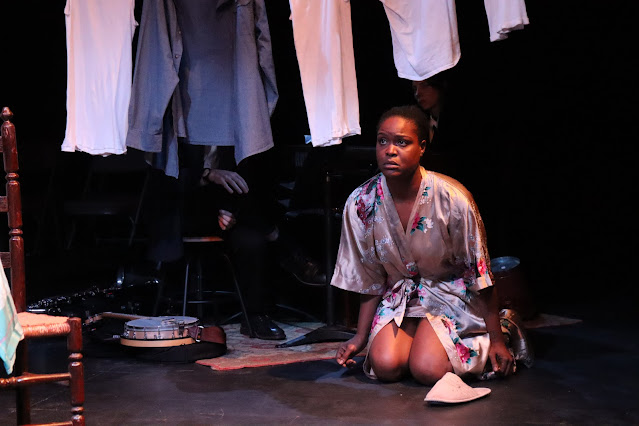A Venomous Color: Burbank (Act 2)
Written and directed by Cameron Darwin Bossert
Presented by Thirdwing via its streaming service
The hybrid model at the core of Thirdwing, founded by Artistic Director Cameron Darwin Bossert, embraces both live and streaming theater productions. The first act of Thirdwing's streaming
A Venomous Color: Burbank extended the narrative begun by its fantastic in-person show
A Venomous Color: The Fairest, which, in its run at
the wild project, explored Disney's "Nunnery," a department made up exclusively of women painters and inkers, as they worked to complete
Snow White and the Seven Dwarfs (you can read our
review here). The four-episode first act of
Burbank–written and directed, like
The Fairest, by Bossert and functioning as a sequel and companion piece to
The Fairest without requiring having seen the earlier play–moves from The Nunnery to the male environs of Walt Disney and his animators as it continues a captivating exploration of the intersections of art, labor, and personal psychology from this shifted perspective (you can read our
review here). Act 2 of
Burbank, which comprises a further five episodes, focuses on Walt (Cameron Darwin Bossert) and animator Art Babbitt (Richard Saudek) as the faces of a labor dispute that also forces
Fairest character Frances Hiller (Sivan Gordon-Buxbaum) to make some ethical choices and brings
A Venomous Color to a compelling conclusion.
Burbank, filmed primarily at the wild project while theaters were closed for the pandemic, is available on Thirdwing's streaming service (starting at $4.99 per month or $49 per year, subscriptions include access to the streaming platform and tickets to live shows; see Thirdwing's
site for details of available membership packages).
As Episode 5 opens, Art comes upon Frances asleep on the lawn outside The Nunnery, and the allusive symbolism continues as she eats an apple as her meal for the day, prompting Art, or at least giving him the opening, to ask if she is making enough money. Their conversation takes place on a simple but striking set whose barren vines call to mind both a fairy-tale wilderness and the bloom having come off the rose for Disney, which has run into financial difficulties in its post-
Snow White period. Relatedly, Art and Frances's sharply delivered badinage also spotlights an important throughline for Act 2: the simultaneous conflict between and inextricably of art and commerce. Art resolves to take his concerns about remuneration to the top of the organization (specifically to Walt's brother, Roy), but Walt hasn't changed his dim view of unionization, and a speech to his "boys" doubles down on the evergreen idea that artists should sacrifice and suffer in exchange for doing something that they love. (The boys here are implied by the dialogue, meaning that the episode in which it appears amounts to an impressive solo performance by Bossert.) Events escalate to a strike, managerial retaliation, alliances dubious and otherwise, and, eventually, Frances being summoned by Walt himself.
Of course, it is easy to side with Art as he, for example, points out to Frances that others in the company have gotten rich by appropriating the surplus value of her labor or that the voice of Snow White is contractually prohibited from doing further voice work in order to preserve the purity of the illusion created by the cinematic product. However,
Burbank suggests that Walt is sincere when he attributes his practices to a desire to create art that touches people and to advance the medium of animation. When he complains that Mickey is not a mean guy, as he appears on some picket signs, he is clearly talking about himself. That Walt in some ways operates based on the same drive to create as Frances may not excuse him, but it certainly enriches
Burbank's personal and thematic conflicts, as do the vivid, vital, textured performances by Bossert, Saudek, and Gordon-Buxbaum.
An intertitle notes that after the box-office disappointment of
Bambi, Disney's era of experimentation gave way to safer bets on what sells, a process that has also been visible with at least one current Disney-owned property. But juxtaposed with this fact is a reminder that at the center of all of these larger issues are people who just want to draw. In exploring both such issues and such people, Act 2 is never less than absorbing. To borrow a term more usually applied to other media,
Burbank is binge-worthy theater.
-John R. Ziegler and Leah Richards



Comments
Post a Comment